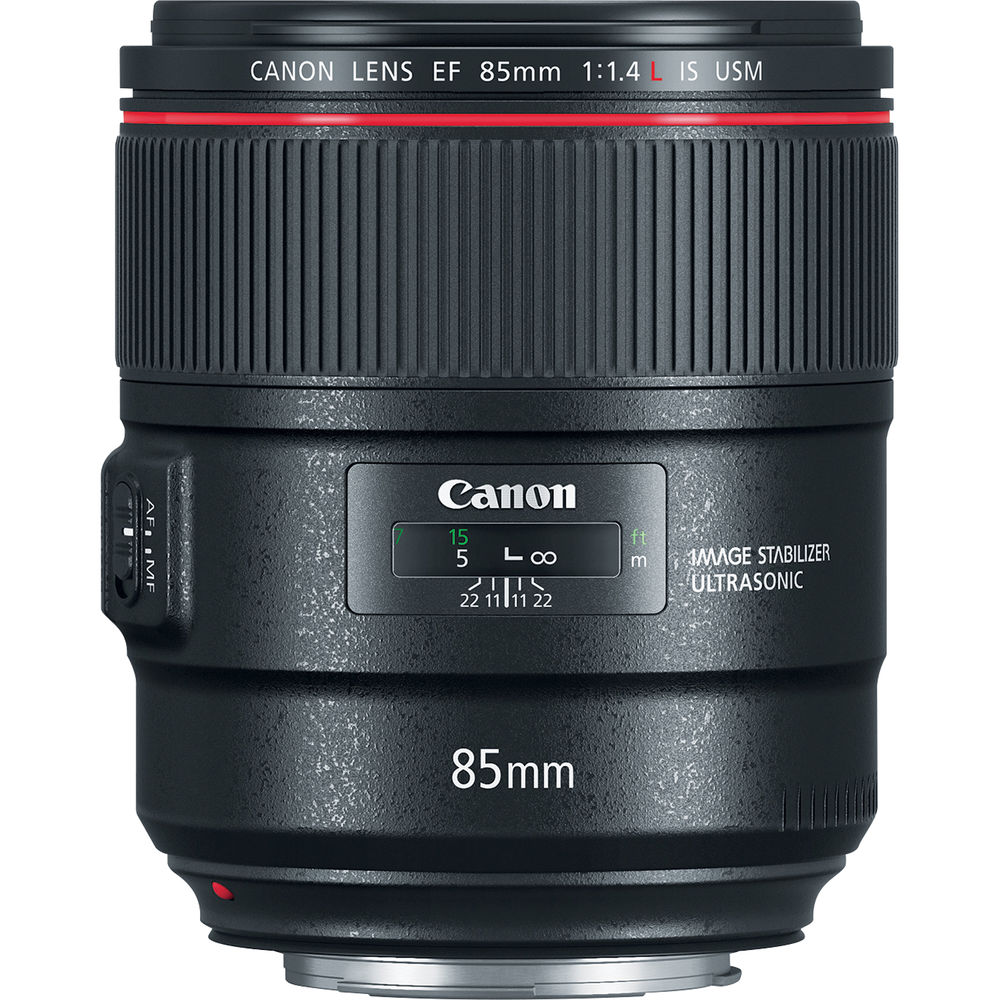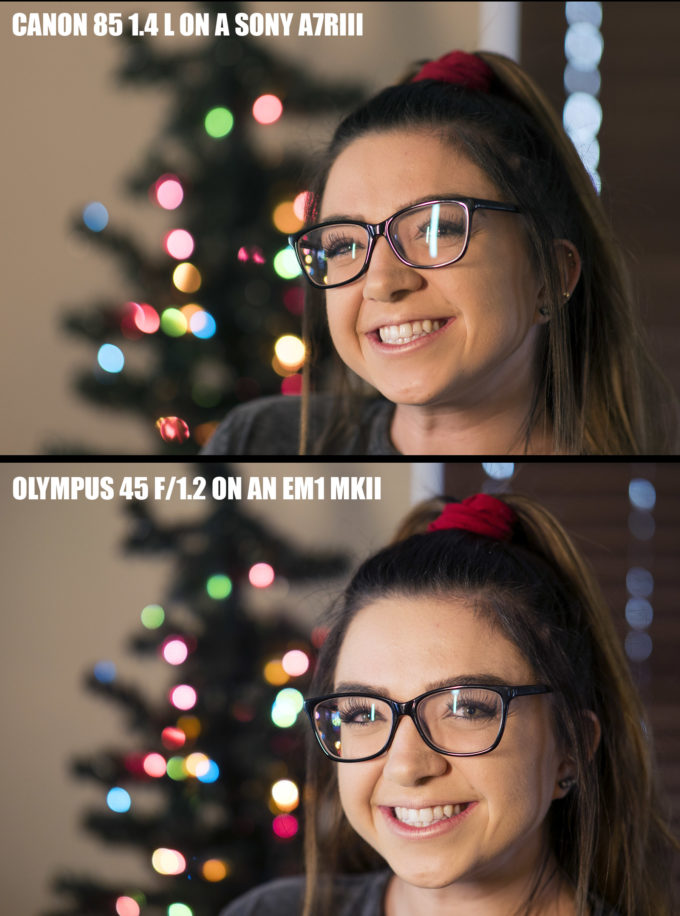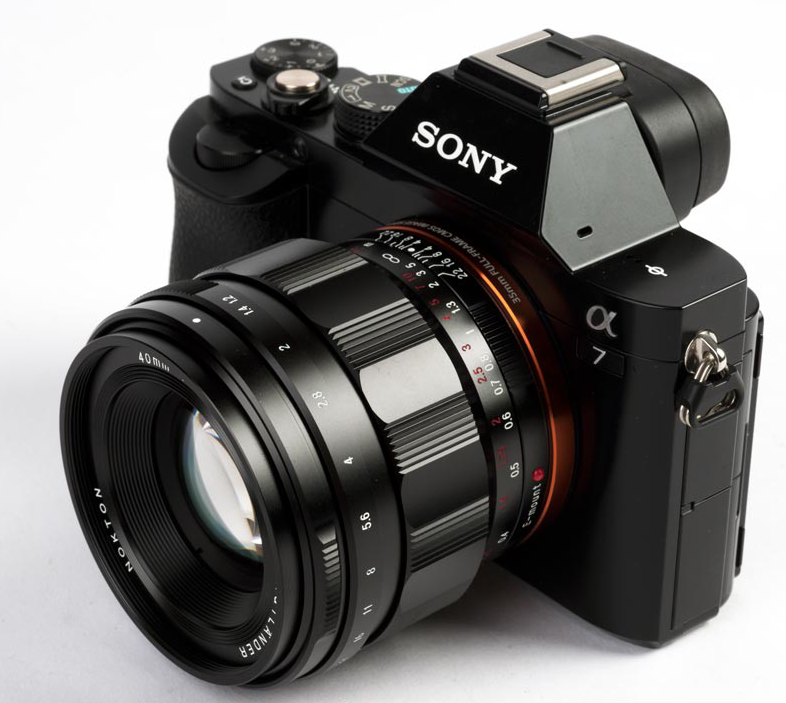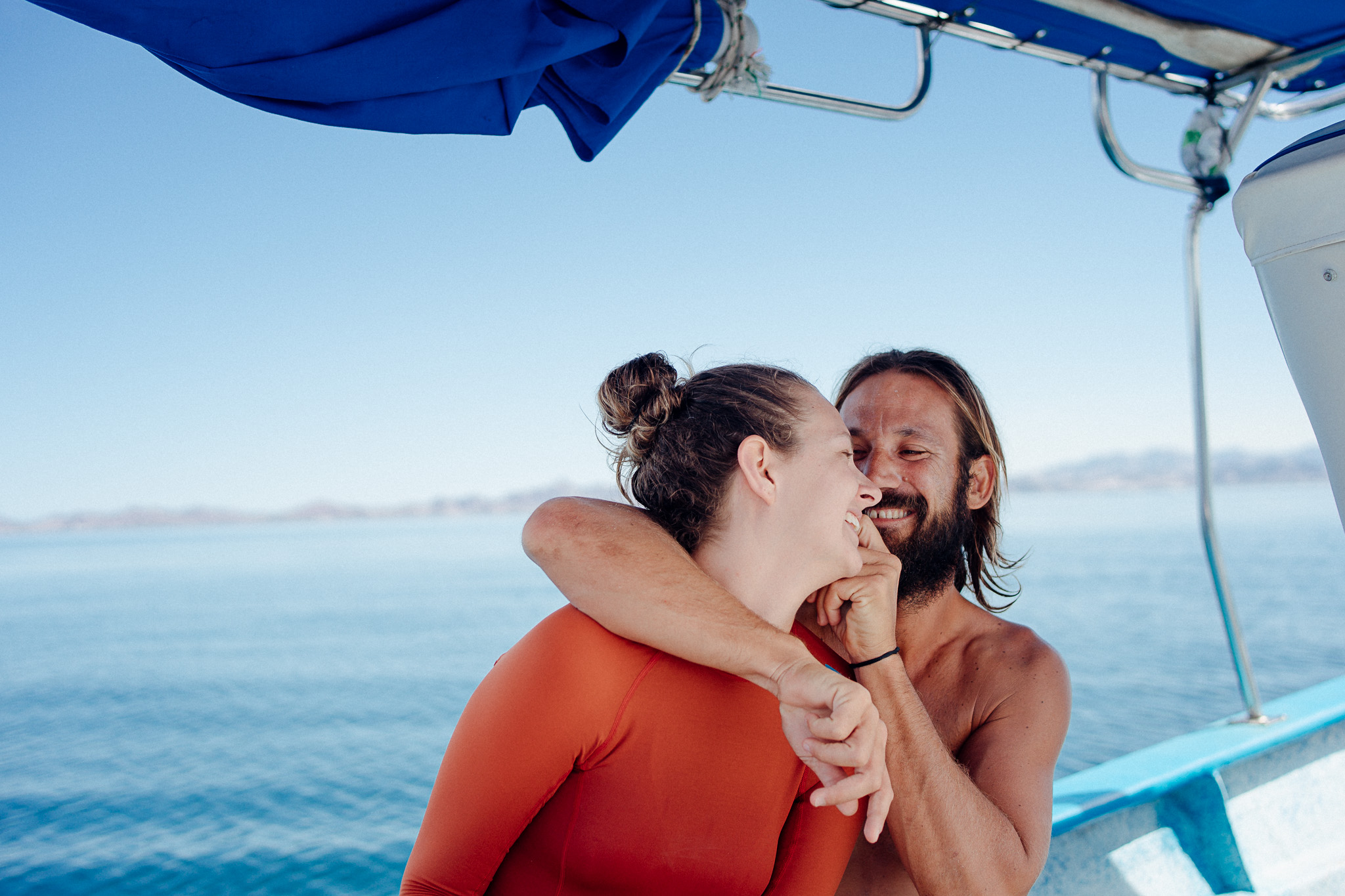
QUICK SHOT COMPARISON: Olympus 45 f/1.2 vs Canon 85 f/1.4L
I have the beastly Canon 85 f/1.4 lens here and it’s a beauty for sure, but man is it HUGE. Just for fun, I decided to attach it to my Sony A7RIII and snap a quick shot of my Stepdaughter Katie. I the took out the EM1 MKII that had the 45 f/1.2 on it and snapped one after that. As always, I let the cameras expose the scene, and shot both wide open as I was not trying to match DOF here, but instead to show the difference between an 85 f/1.4 on full frame and a 45 f/1.2 on Micro 4/3. Below are the OOC results, click it for larger! You must click in fact because if not, they will look soft and muted. This will show you the difference between Olympus’s fastest glass and your typical fast portrait prime at f/1./4. The Olympus is so much smaller and lighter than that Canon and while it offers less DOF, what it does offer is quite nice!






I take quite a few photos of my cat. I find I often need to shoot at least at 5.6 but quite often 8 in order to get sufficient depth of field. I do agree with you that high iso performance suffers on m43, but in my case, with full I woukd have to go two stops smaller for the same depth of field. Since lowering the shutter is undesirable (you know cats) I would have to bump ISO 2 stops to get the same depth of field and shutter with full frame. As such the high iso performance benefit is lost.
There’s very little difference – which is to be expected. This isn’t a situation that’s going to highlight the pros and cons of either lens. They’re two current model expensive portrait lenses doing what they’re made for.
The only differences between the shots are attributable to the difference in DOF (1.2 on 4/3 has more DOF than 1.4 on full frame) and Olympus vs Sony processing.
Nice comparison, but not too relevant. However, a comparison of the Olympus 45mm lens against the Panasonic Leica 42.5mm Nocticron really would be an interesting test. Hope to have time someday. Thanks David
Hi Steve, as a totally addicted fan of the Nocticron – ultimately the very reason for my shift to Olympus when it came out – I can’t wait for your comparison between the two. I have been waiting for the 17mm PRO for 3 years, and it therefore is a no-brainer for me (even though a 1.4, 30% smaller and lighter would have been my personal preference). As an exclusively 35mm/85mm prime shooter, and with a razor-sharp-way-to-frame kinda approach, I would nevertheless highlight that before getting to the optical potential (likely small) differences, a 90mm is NOT an 85mm. It does not make any difference for those who use zooms and many different lenses, but it really does for me. The second point, I believe, is to consider whether weather sealing is necessary. In my case it absolutely is for the 35mm(17mm) but not for the 85mm. This said, I am really eager to read your feelings about these differences. Noctricron is my absolute reference so far, and in particular its Olympus color rendering is stunning and bluffing, including in relatively low light (can send you a couple of pics if you wish). Let us all know!!! Good recovery, Merry Christmas and Happy New Year to you Steve!
The Canon is 130% heavier and 25% more expensive. Is it better? On this shot I actually prefer the Olympus. So, for my wallet’s and my back’s sake I would opt for the 45 f/1.2.
I’ve been using APS-C cameras for 10 years, (Canon), and have been thinking recently about moving to full frame. But then I bought a Panasonic XL 100, and, added to the info I’ve seen on this site, I’m really thinking to go to M4/3 instead.
This comparison is even more convincing.
Thanks Steve.
Oh yes I know this but this wasn’t taken to be a portrait, rather a quick comparison. So I did not care about the glasses. Was aiming for the bokeh from the Christmas tree to see the difference ; ) Thanks.
Everything is better with the Olympus, in this comparison, including the bokeh and the posing.
As an aside it’s good to avoid eyeglass reflections when making portraits.
I see a difference. not so much with the bokeh balls but depth of field on the face is well done on the Olympus shot with both eyes in focus. The Sony shot, I would say both eyes are not. BTW perfect example of the pitfalls of FullFrame, where the blur overwhelms the photographer and all you get is a mashed soup of bokeh. Even with eye-focus. Very interesting example!
I will stay away from FF, it is borderline useless for me.
I consider m43 perfect for use with f/1.8 lenses and this image is again proof 🙂
Show us a picture of the two setups next to each other so we can see the real difference. These are both great combinations. It seems to me you would shoot with the Canon if you need high ISO, and you would shoot with the Oly if you have a bad back.
I think I do understand your statement, especially because I use several M43 cameras, but during the last months I am confronted with their very limited capeabilities in the high ISO area and “high” means even 1600 ISO. (I do indoor cat portraits,- sorry …. (smile). The problem is not only color noise but also significant loss in dynamic range. Lots of people are not aware about this sensor based reduction in dynamic range (you may check http://www.dxomark.com for this) and attribute the outcome to the lighting conditions. I have to admitt that I underexpose the RAWs approx. 2/3 – 1 stop to get an handholdable exposure and to save the highlight rendering. In post I use Silkypix with some of its very helpfull HDR function to improve the tonalities. (Once in a while this HDR produce artifacts, like sharp stripes but this is another topic.). In short: if I would use a current full frame sensor I simply could dial in 1600 or 3200 ISO and this color noise and relevant reduced dynamic range would be gone. Nowadays 1600 or 3200 ISO are no extreme conditions.
Modern lenses are pretty amazing these days. Are any of them soft wide open? Both of these lenses look great and unbelievably sharp for being at their maximum aperture.
I would still like to see them compared at the same DOF (1.2 vs. 2.4). My bet is that the Olympus would have a nicer rendering due to them designing it to be shot wide open while the Canon would be stopped down possibly changing the look, however the FF would have the resolution advantage.
It looks like the Olympus is focused a bit closer, which might explain why the smaller than expected difference in dof.
I don’t see much difference but the fact is we probably should, right? I mean if both shots were taken at the exact same distance from the subject then clearly the canon combo would show slightly shallower depth of field? We are talking about a stop difference? If i were to take two shots with one camera at 1.4 and f2 there would be a clear difference. So why aren’t we seeing it here?
The Oly would produce a lot more beautiful photos than the canon, probably because you’d leave the canon at home more often.
So, what has Steve put under the Christmas tree this time? In one corner the hyped so-called Full Frame Sony with some very serious Canon glass, in the other, the light weight Oly with equal serious glass, and the winner is? Well to my eyes none, but no losers neither, just two beautiful portraits holding there own.
Now let me get to the elephant in the room, it was no mistake I wrote “so-called Full Frame” a 2436mm sensor is NOT in any way “Full Frame” indicating that anything smaller will be inferior. 2436 is simply a heritage from film time and by then regarded as the smalest usable size for producing quality prints.
I can understand the big guns in the game marketing and promote the point of view that you need “Full Frame” to utilize todays digital potential, but looking on these two portraits and a lot of other work, well you don’t !
Now I would like to take the opportunity to wish all reading this A Merry Christmas and a Happy New Year from Sweden.
I’m a die hard Olympus fan of many decades. The image from the 45mm f/1.2 pro is excellent. I hate to say it, but the Canon seems every bit as good. The Canon image is a bit warmer and I think I prefer it for that reason, although it’s nothing that cannot be tweaked on either camera. I think no photographer would be displeased with either lens. In the end, I’ll stick with Olympus, thank you.
Given the difference in MP and more importantly in tonal gradations between a 43 and full frame sensor you cannot attribute any difference to the lens rather than the sensor. You can only judge the two combinations.
To my eye, the Oly shot has better white balance and is sharper.
Both lenses seam to get the job done just fine…
To me the Oly looks better, but tbe angles differ sightly so it is hars to knkw how the difference in lightaffects the shots.
Point taken though – these oly pro lenses are awesome
Hi Steve
Having both images together on one click is brilliant, it’s much easier to compare them.
I prefer the Olympus
Happy Christmas
Tom
Wow, I can’t believe how much better the Olympus looks! Only a quick one-shot, unscientific comparison, I know, but you do often have to be quick in situations like that. Nice shots either way!
Image wise Size wise No contest.
Olympus 45mm F1.2 on PenF anyday of the week.
F1.2 clearly has pleasing glow. It just lets in more light than F1.4 is constructed differently to F1.4 . This shows in the photos. F1.4 is a bit dull mushy.
F1.2 also has a certain clarity that F1.4 doesn’t.
F1.2 face seems to step out of the background whereas F1.4 face is more receeded.
Red hairband i prefer Olympus color.
Hi, Steve,
Thank you for the shots.
The images are almost identical to me. The way the forehead skin looks on the Canon image is more pleasant to my eye but it could be due to the slightly different head position and the light.
As an Olympus user, I would definitely enjoy the 45 mm f/1.2 lens.
Merry Christmas to you and your family.
Enjoy your holidays with your family and nice cameras!
Val